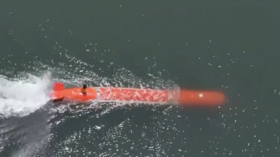40 years since Soyuz-Apollo: Handshakes in space as USSR, US fly together

The handshake in orbit was a critical event in a temporary thaw in US-Soviet relations known as détente: a period when the two superpowers tried to steer away from confrontation and toward peaceful coexistence after the US had withdrawn from Vietnam.
The bid to warm relations was a partial failure, as direct
confrontation gave way to proxy wars, but it nonetheless produced
a tangible reduction in tensions. The Apollo–Soyuz Test Project
(ASTP) was, to a large extent, a public relations exercise
selling détente to skeptics in both camps.
The idea for a joint space mission was first devised in 1970, but
it took two years for the idea to evolve into a signed agreement.
Three more years were spent resolving technical and
organizational details, training crews at both American and
Soviet facilities, and preparing the actual launches.

Couplings and copulations
For NASA, ASTP was the last mission of the Apollo program. The biggest alteration to the spaceship was the replacement of the moon landing module with a docking adapter. The Apollo vehicle’s atmosphere consisted of pure oxygen under low pressure while the Soyuz spacecraft had an oxygen-nitrogen mix similar to regular breathing air at normal pressure. Coupling the two capsules directly would have disrupted life support on both. A three-hour transition period, when air from the two vehicles passed through the adapter, was introduced to resolve the problem. The Russians also had to develop new flame-retardant fabric for their suits in order for them to be suitable for the oxygen-rich environment of their American hosts.

The docking also required that a new mechanism, called an
Androgynous Peripheral Attach System (APAS), be developed.
Designs derived from that project are still in use on the ISS and
in China’s space program. Previously both space-faring nations
had used a probe-and-drogue mechanism, which is similar to an
electric plug and socket in the sense that two halves of
different “sexes” were needed for coupling to be possible.
APAS was made to be able to serve as either ‘male’ or ‘female’
during a docking procedure, as needed. A lewd joke claims that
neither country was willing to install a ‘female’ mechanism on
its spaceship, as it would have implied submission. Anyhow,
during the series of dockings and redockings, both Apollo and
Soyuz had a chance to take the active role in the procedure.

Grim shadow over Soyuz
The Soyuz spacecraft was a work in progress at the time of the
mission, with serious modifications having been introduced in
1973. They had been called for after the Soyuz-11 disaster in
which three cosmonauts died after their capsule accidentally
depressurized at high altitude during reentry.
The disaster prompted designers to reduce the crew to just two
people in order to free up enough space for them to wear pressure
suits during launch and reentry. The two Soviet crew members of
the Apollo-Soyuz mission, Aleksey Leonov and Valery Kubasov, were
meant to have flown in the ill-fated Soyuz-11, but had been
pulled off the mission due to a suspected infection.
The USSR carried out extensive testing and preparations for the
all-important joint mission. Six spacecraft similar to the
Soyuz-19 that actually flew to rendezvous with Apollo were built.
Two were used in unmanned test flights, one was manned for the
Soyuz-16 mission, one was actually used in ASTP, and two were
kept on the ground as backup, including one which was fully
fueled and ready to fly a rescue mission if needed.

Three languages in orbit
The historic mission lasted 5 days 22 hours for Soyuz and 9 days 1 hour for Apollo. They two spacecraft remained docked for 1 day 23 hours during that time. Between sharing meals, talking to President Gerald Ford and General Secretary Leonid Brezhnev, and speaking to each other in their respective tongues (Leonov joked that Tom Stafford’s Russian was a language of its own, Oklahoman) the crews had time to conduct an extensive scientific program. It included experiments on how microbes could pass between astronauts and cosmonauts, and a study of the solar corona from Soyuz, as Apollo maneuvered to eclipse the sun for it.

The mission also set a record for the oldest person in space.
Deke Slayton had been selected as one of the seven original
Mercury astronauts in 1959, but was grounded soon after due to a
heart condition. By the 1970s his condition improved and, being
head of NASA’s astronaut office, he selected himself for ASTP. He
was 51 at the time. The title for the oldest person in space has
since changed hands several times and is currently held by John
Glenn, who was 77 at the time of his 1998 Discovery voyage to the
International Space Station.
The Apollo-Soyuz flight left a lasting legacy of joint space
exploration that survived the hostilities of the 1980s and
continues to this day at the International Space Station.













